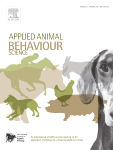Document type : Scientific article published in Applied Animal Behaviour Science
Authors: Kata Vékony, Fruzsina Prónik, Péter Pongrácz
Preview: In case of social animals often we can observe dominance hierarchies among the group members around limited resources. Once stabilized, hierarchy can help the access to these resources - in favour of the dominant individuals - without serious conflict or harm. While we can easily identify the limited resources in nature, in case of companion dogs, all essential resources are provided by the owner thus shortcutting competition. While it seems that its original function is not present in companion dogs, dominance hierarchies were still described in dog groups. As everyday competition for essential resources is seldom part of the lives of most companion dogs, our aim was to find what traits might be related to the formation of these hierarchies and the rank of the individuals. We designed an online survey for owners of multiple dogs to assess i) the dominance relationship between the co-habiting dogs via their everyday interactions and ii) their personalities using the Canine Big Five questionnaire. We received responses for 1082 dogs. Four of the five personality traits had a significant association with dominance: while more extroverted (p = 0.0003), conscientious (p = 0.0006), and open (p = 0.0088) dogs scored higher on dominance, more agreeable dogs scored lower (p< 0.0001). In accordance with previous studies, we also found that older dogs tend to be more dominant (p = 0.001). We also found a small but not negligible number of dog-pairs that had no difference in their dominance scores. Although our study is not suitable for detecting causality, the results show that there is a complex association between owner-perceived dominance and personality in group-living companion dogs.






